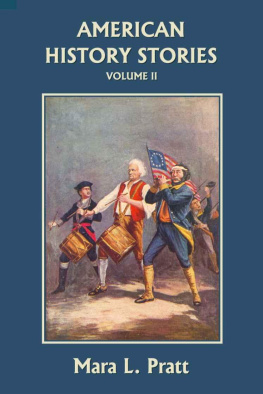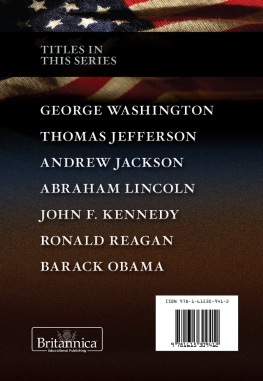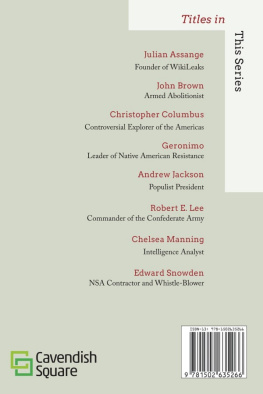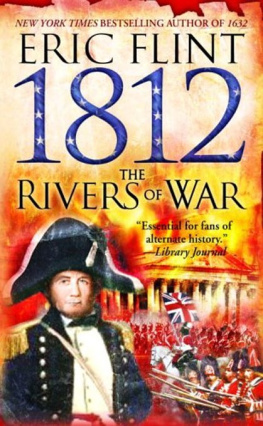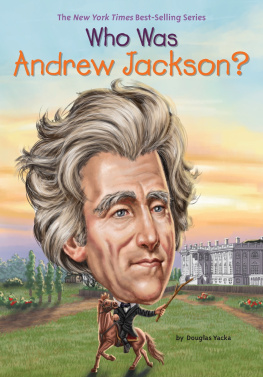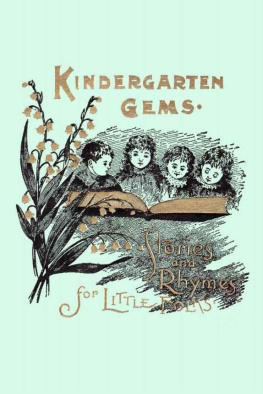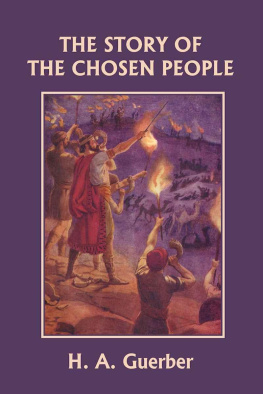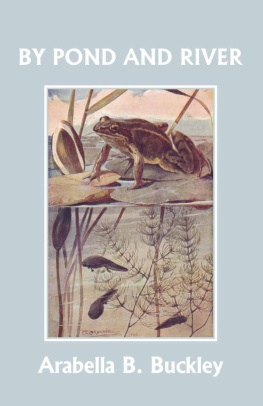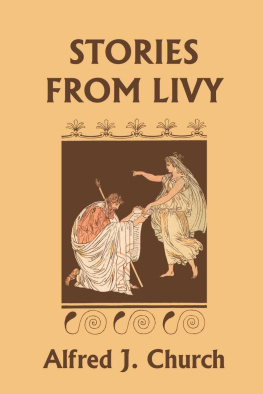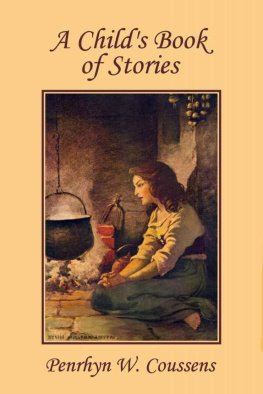American History Stories
Volume III
by
Mara L. Pratt
Yesterday's Classics
Chapel Hill, North Carolina
Cover and Arrangement 2010 Yesterday's Classics, LLC
All rights reserved. No part of this book may be reproduced or retransmitted in any form or by any means without the written permission of the publisher.
This edition, first published in 2010 by Yesterday's Classics, an imprint of Yesterday's Classics, LLC, is an unabridged republication of the work originally published by Educational Publishing Company in 1890. This title is available in a print edition (ISBN 978-1-59915-204-2).
Yesterday's Classics, LLC
PO Box 3418
Chapel Hill, NC 27515
Yesterday's Classics
Yesterday's Classics republishes classic books for children from the golden age of children's literature, the era from 1880 to 1920. Many of our titles are offered in high-quality paperback editions, with text cast in modern easy-to-read type for today's readers. The illustrations from the original volumes are included except in those few cases where the quality of the original images is too low to make their reproduction feasible. Unless specified otherwise, color illustrations in the original volumes are rendered in black and white in our print editions.
Contents
THE CAPITOL, WASHINGTON
The Nation
I N all the history of our people up to this time, you have heard always the terms colonies and colonists ; but now, after the Revolution, these colonists re-organized themselves under a new government, with a President at the head. They now called the different colonies States , and spoke of themselves henceforth as the American Nation .
For a long time after the Revolution, the kind of government they should have was a question of great dispute. Some would have liked a government similar to that of England, with a king at the head; others declared they would have nothing like the English government, and were especially determined never again to be ruled by a kingnot even a king of their own choosing.
Finally, in 1787, a convention of fifty of the leading men of the country met at Philadelphia to decide upon some form of government which should, as nearly as possible, suit all the colonies.
For four whole months they worked together, and at last presented to the people the "Constitution," as it was called, which to this day forms the basis of our government.
Of course, the constitution, wise as it was, could not suit everybody. Franklin himself, who was one of the fifty who wrote it, was not entirely satisfied with it; but, with each of the thirteen colonies wanting something different from every other, it was the best that they could do. On the whole, it gave very good satisfaction; ten of the coloniesStates, I should say nowaccepted it at once. Three States, however, held out against it for some time. But two of them gave way without much trouble. Rhode Island, the smallest State of allso small that it is called Little Rhodythen stood alone, stoutly refusing for a year or more to come into the ranks. This shows, I suppose, that even the little Rhodys and little Johnnies may be as plucky as the larger ones, if only they believe they are in the right. Little Rhody, however, finally gave way, and entered the Union with the same good will to all, no doubt, that had been shown by the other States.
Now a flagthe United States Flagwith its thirteen stars and thirteen stripeswas unfurled to the breezes; and the colonies were indeed the "United States of America."
The First President
W HEN , at last, the States had all agreed to accept the Constitution as the basis of government, the next thing to do was to elect a President, and so establish themselves as the American Nation at once.
As might be expected, Washington was the man chosen for this important office; and when we recall how generous, how brave, and how wise he had been during the Revolution, we cannot doubt for a moment that he was the very best choice for this new position.
It was decided to make New York City the capital of the United States; and thither Washington in his coach-and-four set forth from his beautiful home in Virginia to take his place as first President of the United States of America. It is said that his journey was one ovation from the time he left Mt. Vernon (his home) until he reached New York City. Crowds of gaily-dressed people, bearing baskets and wreaths of flowers, hailed his appearance at every village, with shouts and songs of joy.
When he reached Trentonthe very place where, a few years before, so heartsick and discouraged he had crossed the Delaware on that wintry Christmas night to attack the drunken Hessians,at this very place the road was strewn with roses, the young maidens held arches of flowers over him, and the air rang with songs of gratitude and welcome.
In New York City a grand ball was given. Never before had this little community seen so much elegance. Washington had left off his blue "soldier coat," and was now dressed in a handsome suit of black velvet, with white silk stockings, beautiful silver buckles, and satin waistcoat. He was very tall, and straight, and manly looking; and with his elegant dress, and his powdered hair, he must indeed have made a very distinguished appearance.
STATUE OF WASHINGTON. UNITED STATES TREASURY BUILDING, NEW YORK CITY. ON THIS SITE IN FEDERAL HALL, APRIL 30, 1789, GEORGE WASHINGTON TOOK THE OATH AS THE FIRST PRESIDENT OF THE UNITED STATES OF AMERICA.
John Adams, the Vice-president, was there, and so was Hamilton, the Secretary of the Treasury. General Knox, too, with his beautiful wifethe most beautiful woman of her time, so it is said, was there. Jefferson, who had been in France some time, now came back to America to be present at this "Inauguration Ball." He took everybody by surprise by appearing dressed as were the French people at that timein white broadcloth coat, scarlet waistcoat, and breeches, cocked hat, and white stockings. It was indeed a wonderful ball, and I am sure there were beauty, and elegance, and grace, such as any court in Europe might well have been proud of.
In all the large towns celebrations of all sorts were held. In the city of New York there was a grand procession, such as never before had been seen in America. This procession was headed by a man dressed to look like Columbus, the discoverer of the country. Behind him were long lines of men with axes, who represented the pioneersthat is, the men who first came here from Europe, and felled the trees and cleared the places for roads and cities; then came lines of men dressed to represent the farmers, with plows, and scythes, and reapers; then came carts, fitted up like work-shops to represent the different trades. One cart, which represented a bake-shop, had upon it a huge loaf of bread, ten feet high, on which were printed the names of all the states; the coopers were putting together a barrel with thirteen staves, and binding it with a strong iron band, which they called "The New Constitution;" the butchers were roasting a whole ox, which, when the celebration was over, was to be eaten by the people in the procession.
In the procession there were thirteen boys, each thirteen years old, dressed in white, with ribbons and garlands of green.
On another cart was a printing press; and, as it passed along, the printers printed copies of patriotic verses, and flung them right and left to the people.



